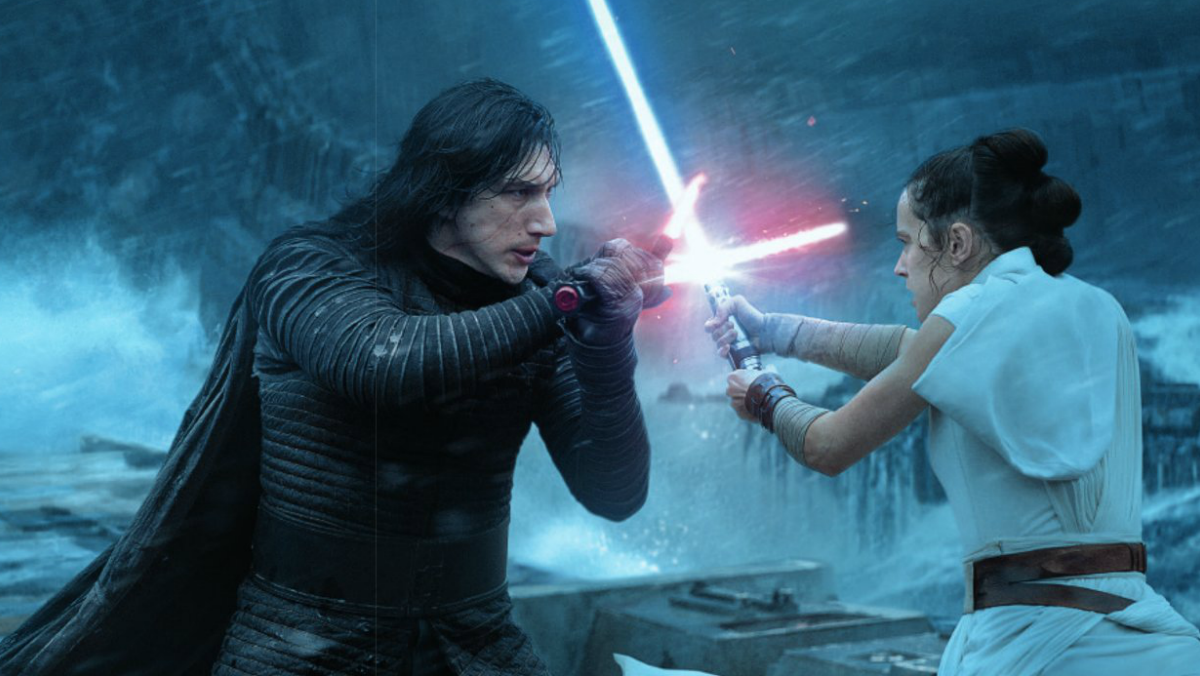Courtesy of Den of Geek
SPOILERS WITHIN
Rian Johnson left the new trilogy off with “The Last Jedi,” the best Star Wars movie since “The Empire Strikes Back” came out in 1980. After the somewhat unoriginal – but good – “Force Awakens” started the new trilogy, “The Last Jedi” moved the story down an original and interesting path with compelling themes about what makes a hero and what truly defines a Jedi. Then, in December 2019, “The Rise of Skywalker” screwed it all up.
The first problem to note is that half of the movie happens off screen. Characters also have pivotal relationships and developments that are never actually addressed in the film. Instead, they are only vaguely referenced, left out entirely or solely discussed in supplemental material, like the art book that Disney released for the film.
Director J.J. Abrams confirmed in an interview that Finn, played by John Boyega, wanted to tell Rey, the protagonist played by Daisy Ridley, that he is force sensitive, but never got the chance to do so in the movie. For some reason, all evidence of his force sensitivity didn’t make the final cut. They also introduced Zorii Bliss (Kerri Russel) an old friend of Poe (Oscar Isaac), who gets no characterization or development before giving the main character her most valued possession. This is because of the apparent strong relationship she has with Poe, all of which happens off screen.
The worst example of significant plot elements occurring off screen is that Emperor Palpatine, played by the fantastic Ian McDiarmid, returns in the yellow text crawl iconic to the series. There is no explanation for how he survived the events of the original trilogy, in which he explodes on camera. His relation to the last few movies is shoehorned in poorly, and fails to justify the decision to bring him back. His inclusion feels forced and underdeveloped, taking away from the emotional core of the movie and making the overall conflict less engaging.
The most offensive part of Palpatine’s inclusion is that it destroyed the themes established in “The Last Jedi.” Johnson’s Star Wars film told a story where origins don’t matter: anyone can be important, anyone can save the world and anyone can use the force. Abrams took that theme, threw it out and replaced it with eugenics. It took the girl from nowhere and turned her into the granddaughter of the galaxy’s most powerful Sith Lord because, according to this movie, greatness can’t come from anywhere, it can only be bred. This is a culmination of the idea of a “force dyad,” which is when a Skywalker and a Palpatine come together and their superior genes apparently create weird force magic. This, by the way, was never established in previously in the saga when a Palpatine and a Skywalker spent considerable time together.
Beyond that, the plot is rushed and nonsensical, with half of the movie being taken up by a search for a MacGuffin that would lead the cast to another MacGuffin. Because of the time this takes, all the other elements, like Palpatine’s return and the actual conflict of this movie, feel rushed.
There are two major fake-out deaths of characters from the original trilogy that are reversed within minutes. Major plot points and characters from previous movies are either abandoned or poorly developed, like Rose, who was written out of the franchise. The Knights of Ren, who were built up throughout the plot, ended up just being menacing figures who are thrown away in a lame fight that works as no more than a speed bump before the final fight with Palpatine.
With all these problems, the movie lost any emotional punch. The climax at the end elicited laughs from several people in the theater, and the applause at the end of the movie could only be described as weak. This was a far cry from the deafening cheers heard at the end of “The Force Awakens,” back when the new trilogy began.








